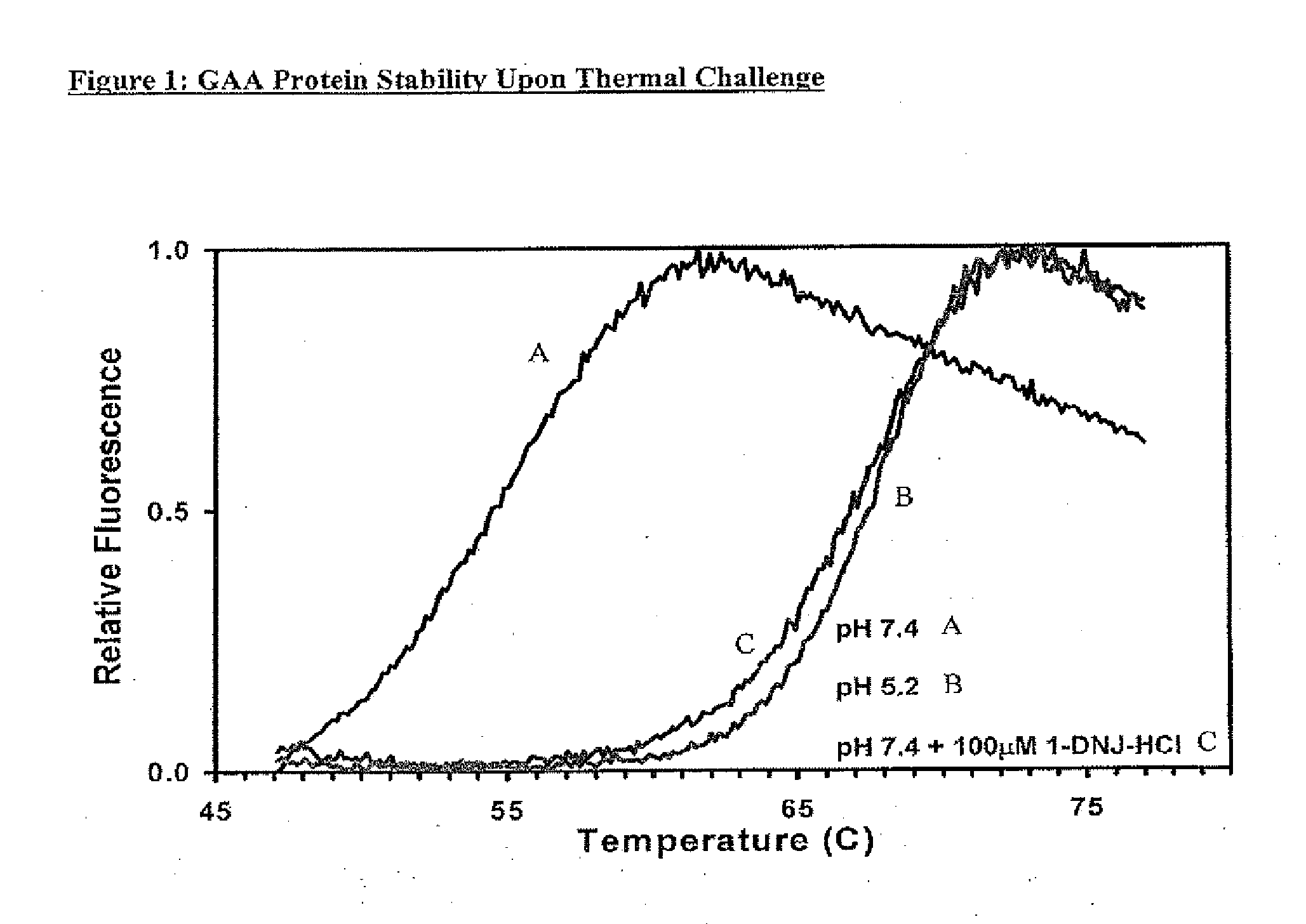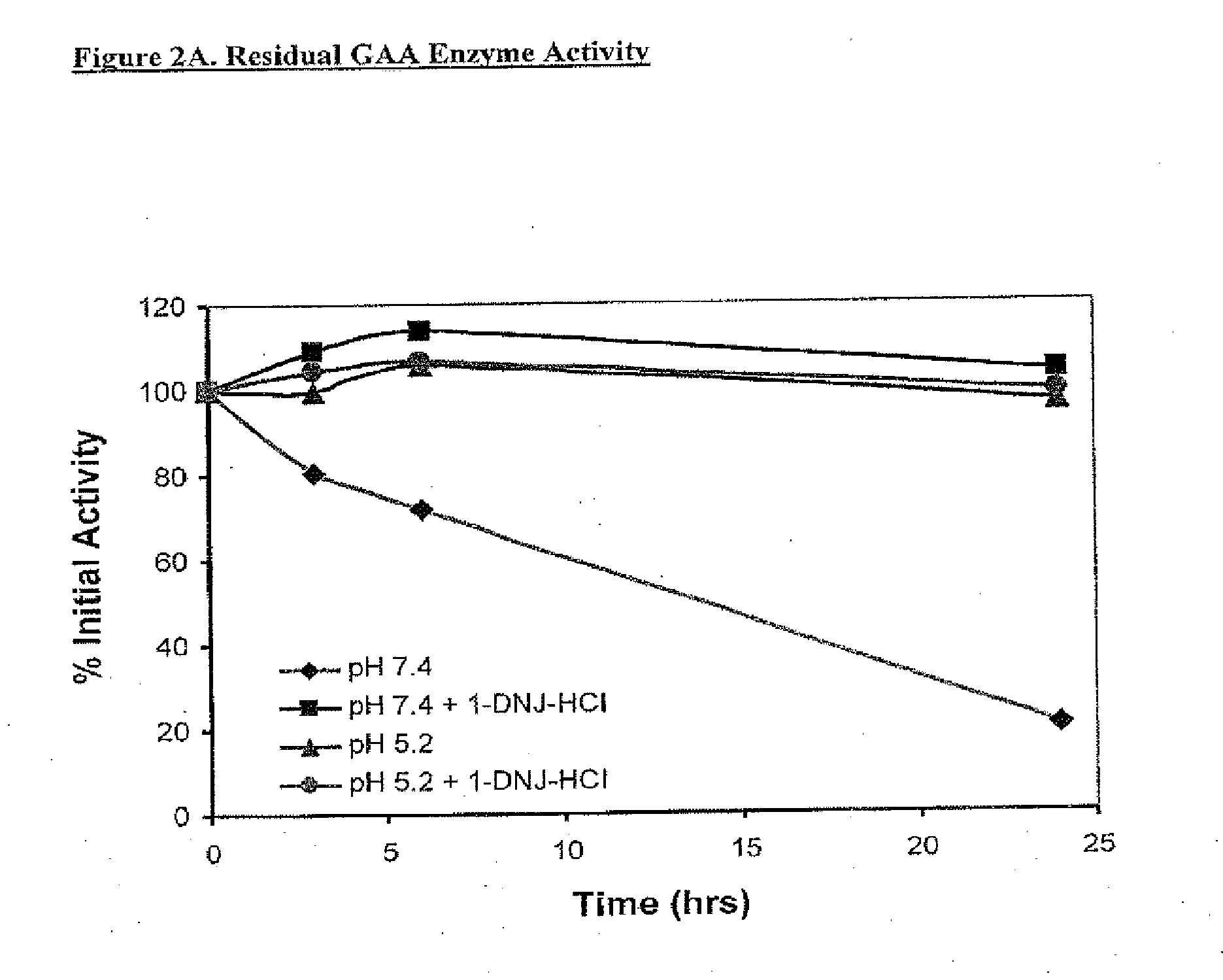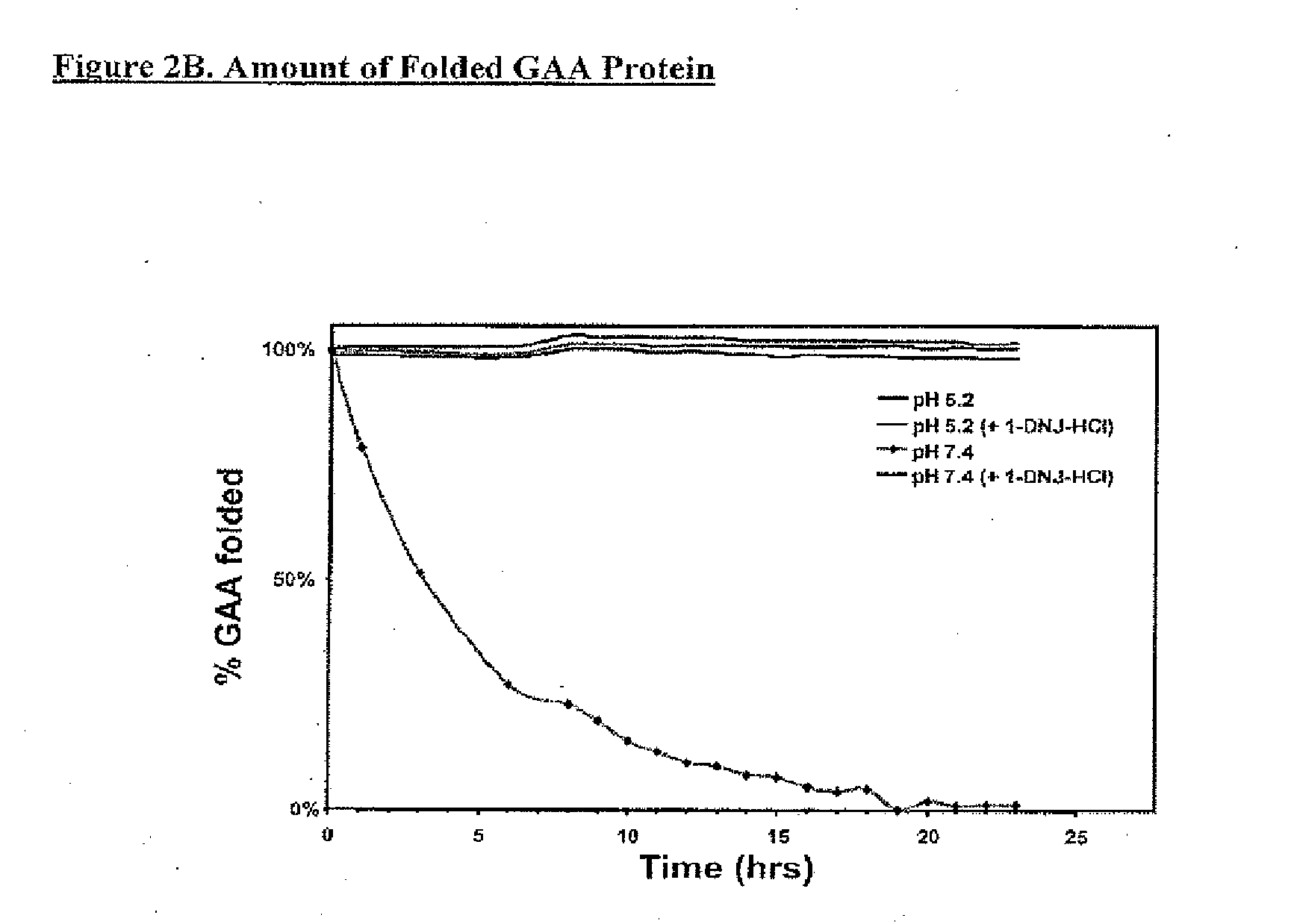High Concentration Alpha-Glucosidase Compositions for the Treatment of Pompe Disease
a technology of alpha-glucosidase and compositions, which is applied in the direction of drug compositions, enzyme stabilisation, peptide/protein ingredients, etc., can solve the problems of pompe disease diagnosis, tongue protrusion, and difficulty in swallowing, so as to increase protein concentration, protein concentration, and protein aggregation.
- Summary
- Abstract
- Description
- Claims
- Application Information
AI Technical Summary
Benefits of technology
Problems solved by technology
Method used
Image
Examples
example 1
In Vitro Thermal Stability of rhGAA and 100 μM 1-DNJ-HCl
[0167]The stability of recombinant human GAA (Myozyme®, Genzyme Corp.) with and without 100 μM of the ASSC 1-deoxynojirimycin hydrochloride (1-DNJ-HCl) was determined via a thermal stability assay that utilizes heat to induce protein denaturation. Denaturation is monitored using a SYPRO Orange dye that fluoresces upon binding to hydrophobic amino acids (which are not exposed in a folded protein).
[0168]The thermal stability was performed at pH 7.4 for two formulations, which corresponds to the pH of the ER. As shown in FIG. 1, the formulation that contains 100 μM of 1-DNJ-HCl at 7.4 pH required significantly more heat to denature, and is thus more stable, as compared to formulation without the ASSC at 7.4 pH.
example 2
GAA Residual Activity and Thermal Stability of rhGAA and 50 μM 1-DNJ-HCl
[0169]Residual GAA activity was determined for four formulations:[0170](1) Myozyme® alone at pH 7.4;[0171](2) Myozyme® plus 50 μM 1-DNJ-HCl at pH 7.4;[0172](3) Myozyme® alone at pH 5.2;[0173](4) Myozyme® plus 50 M 1-DNJ-HCl at pH 5.2.
[0174]Activity was measured, based on the % of initial activity (t=0) over 24 hours. Samples were assayed for GAA enzyme activity based on the hydrolysis of the fluorogenic substrate 4-MU-α-glucose at 0, 3, 6 and 24 hours. The GAA activity was expressed as % of initial activity, i.e. residual activity.
[0175]As shown in FIG. 2A, formulation (1) above (without the ASSC) lost activity over time, having only about 20% of its initial activity 24 hours after administration. In contrast, formulation (2) maintained most, if not all of its initial activity over 24 hours. Both formulations at ph 5.2 (formulations (3) and (4) above) maintained most of their initial activity over 24 hours.
[0176...
example 3
In Vivo Uptake of Myozyme® in GAA KO Mice with and without Oral Administration of 1-DNJ-HCl
[0177]Five groups of GAA KO mice were administered one of the following formulations:[0178](1) untreated control;[0179](2) 10 mg / kg of Myozyme® IV once per week, for up to three weeks[0180](3) Myozyme® infusion as in (2), plus 10 mg / kg of 1-DNJ-HCl;[0181](4) Myozyme® infusion as in (2), plus 100 mg / kg of 1-DNJ-HCl;[0182](5) Myozyme® infusion as in (2), plus 1000 mg / kg of 1-DNJ-HCl; Tissue homogenates were generated for analysis. Enzymatic activity as determined using a 4-MUG fluorogenic substrate assay. The results are shown in FIG. 3.
These results indicate that Myozyme® tissue uptake (as a measure of GAA activity) declined at 7 days post injection for all groups. Coadministration of 1-DNJ-HCl with Myozyme® facilitated a dose-dependent increase in Myozyme® uptake for up to 7 days post injection. The effect of 1-DNJ-HCl was more pronounced and significant (p
PUM
| Property | Measurement | Unit |
|---|---|---|
| concentration | aaaaa | aaaaa |
| concentration | aaaaa | aaaaa |
| concentration | aaaaa | aaaaa |
Abstract
Description
Claims
Application Information
 Login to View More
Login to View More - R&D
- Intellectual Property
- Life Sciences
- Materials
- Tech Scout
- Unparalleled Data Quality
- Higher Quality Content
- 60% Fewer Hallucinations
Browse by: Latest US Patents, China's latest patents, Technical Efficacy Thesaurus, Application Domain, Technology Topic, Popular Technical Reports.
© 2025 PatSnap. All rights reserved.Legal|Privacy policy|Modern Slavery Act Transparency Statement|Sitemap|About US| Contact US: help@patsnap.com



